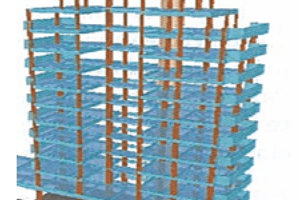Podcast
Questions and Answers
What was the main motivation behind the transfer of competences from the JHA pillar to the EC pillar?
What was the main motivation behind the transfer of competences from the JHA pillar to the EC pillar?
- To increase national sovereignty
- To achieve more efficient decision-making (correct)
- To reduce the role of the European Commission
- To focus on economic development
What was the outcome of the communitarisation of the Schengen acquis?
What was the outcome of the communitarisation of the Schengen acquis?
- The abolition of border controls between EU Member States and non-EU countries
- The integration of the Schengen system into the EU legal framework with an opt-out for the UK and Ireland (correct)
- The creation of a common visa policy for all EU Member States
- The withdrawal of the UK and Ireland from the EU
What was the original purpose of the Schengen agreement?
What was the original purpose of the Schengen agreement?
- To create a common defense policy for the EU
- To promote environmental conservation in the EU
- To establish a common currency among EU Member States
- To provide for the abolition of border controls on the movement of persons between EU Member States (correct)
What was the significance of the Amsterdam Treaty in relation to the JHA pillar?
What was the significance of the Amsterdam Treaty in relation to the JHA pillar?
Why did the Member States prefer inter-governmental processes over supra-national processes?
Why did the Member States prefer inter-governmental processes over supra-national processes?
What was the approach to European integration described by Jean Monnet?
What was the approach to European integration described by Jean Monnet?
What was the outcome of the adoption of the EU Charter of Fundamental Rights?
What was the outcome of the adoption of the EU Charter of Fundamental Rights?
What was the perspective on the emergence of the European Council?
What was the perspective on the emergence of the European Council?
What was the original focus of the EEC Treaty?
What was the original focus of the EEC Treaty?
What is the name of the theory that describes the approach to regional integration?
What is the name of the theory that describes the approach to regional integration?
What was the exception to the integration of the Schengen system into the EU legal framework?
What was the exception to the integration of the Schengen system into the EU legal framework?
What is the idea behind neo-functionalism?
What is the idea behind neo-functionalism?
What is a result of successful integration in one field, according to neo-functionalism?
What is a result of successful integration in one field, according to neo-functionalism?
What was the impact of the Treaty of Amsterdam on the field of Justice and Home Affairs?
What was the impact of the Treaty of Amsterdam on the field of Justice and Home Affairs?
Why was the European Council's leadership role important for the EU?
Why was the European Council's leadership role important for the EU?
What is a characteristic of the process of European integration?
What is a characteristic of the process of European integration?
What was the primary motivation for Western European states to pursue closer ties in the post-WWII period?
What was the primary motivation for Western European states to pursue closer ties in the post-WWII period?
What is the main aim of the Council of Europe, as defined in Article 1(a) of its Statute?
What is the main aim of the Council of Europe, as defined in Article 1(a) of its Statute?
What is the significance of the Treaty of London in the context of European integration?
What is the significance of the Treaty of London in the context of European integration?
What is the importance of bringing European States into closer association, as expressed in the preamble to the Statute of the Council of Europe?
What is the importance of bringing European States into closer association, as expressed in the preamble to the Statute of the Council of Europe?
What is the common heritage of European States, as referred to in the Statute of the Council of Europe?
What is the common heritage of European States, as referred to in the Statute of the Council of Europe?
What is the relationship between European integration and the risk of inter-state conflict, as implied in the text?
What is the relationship between European integration and the risk of inter-state conflict, as implied in the text?
Study Notes
Historical Development of the European Union
- The Amsterdam Treaty led to a partial transfer of competences from the JHA pillar to the EC pillar, reflecting the Member States' view that their objectives would be unlikely to be achieved under a purely inter-governmental framework.
- The Schengen acquis was communitarized, integrating the Schengen system into the EU legal framework, with an opt-out for the UK and Ireland.
- The Amsterdam Treaty also led to the adoption of an EU Charter of Fundamental Rights on a non-binding basis.
Initial Steps towards European Integration
- The post-WWII period saw a surge in diplomatic activity and domestic politics to promote cooperation between Western European states.
- The Council of Europe was established by the Treaty of London in 1949, with the aim of achieving greater unity between its members and safeguarding common ideals and principles.
- The Council of Europe's Statute emphasizes the importance of cooperation for peace, justice, and international cooperation, and the preservation of human society and civilization.
Theories of Integration
- Jean Monnet's approach to European integration was based on the concept of "small steps," where practical cooperation in one sector would gradually extend to other sectors.
- This approach is theorized as "neo-functionalism," which suggests that successful integration in one field would generate "spill-over effects" to other areas, leading to a progressive decline of the relevance of the state.
Studying That Suits You
Use AI to generate personalized quizzes and flashcards to suit your learning preferences.
Description
Quiz on the changes in the European Union's Pillar structure, specifically the transfer of competences from the JHA pillar to the EC pillar.




